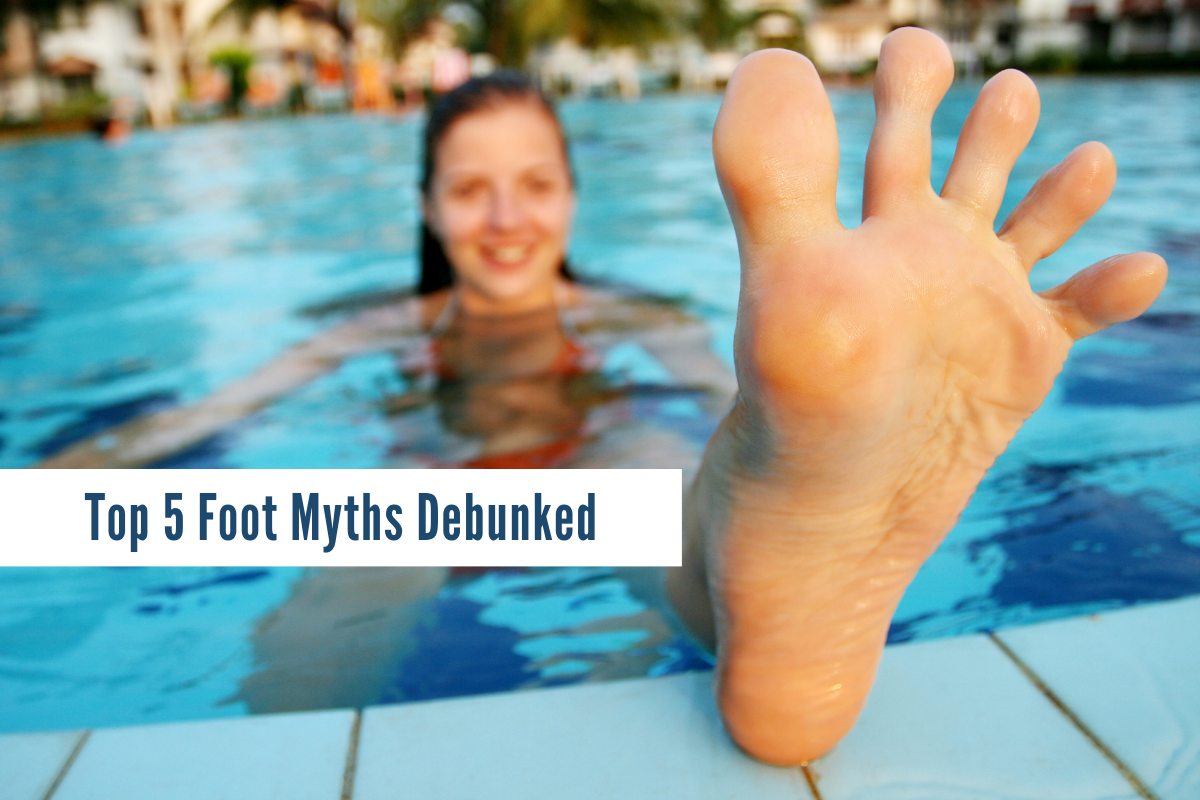Your Cart is Empty
🎁 Holiday Sale | 15% Off Almost Everything | Discount Applies at Checkout 🎁
🎁 Holiday Sale | 15% Off Almost Everything | Discount Applies at Checkout 🎁
Shop
Products
Top 5 Foot Myths Debunked
April 04, 2023 3 min read

By Dr. Emily Splichal Originally published Oct 26, 2022 on The Barefoot Advantage at: https://ca.naboso.com/blogs/the-barefoot-advantage/top-5-foot-myths-debunked-by-a-functional-podiatrist
With the advent of the internet came the power of information, especially in the health and wellness space. With sites like WebMD and what I like to call “Dr Google” anyone can now search their symptoms and in many cases self-diagnose.
As positive as this sounds, there is a downside to this information-age, and that is accuracy of information. Anyone theoretically can claim to be an expert and can create content on the internet.
Below are a few foot myths we’ve seen on the internet and that we want to make sure we set the record straight.
Myth #1 – Bunions are caused by bad shoes
This is probably one of the biggest myths both on and off the internet. A bunion is a deviation of the long bone (metatarsal) in the foot causing a bump on the inside of the foot near the big toe.
Often blamed on narrow footwear, bunions are actually caused by an instability and hypermobility in the foot, specifically a part of the foot called the 1st ray. This joint in the foot loses its stability in those with flat feet, over-pronation and ligament laxity.
Prevention of bunions can be done by strengthening the feet and hips, wearing sensory insoles or arch supports and integrating toe spacers into your day.
Myth #2 – Our feet cannot support themselves without orthotics
Building off of Myth #1, certain foot types cannot support themselves with orthotics, but this is the minority of feet. The vast majority of us have the capacity to support our arch dynamically – we may just need to strengthen our feet.
One of the best exercises for strengthening the foot and arch is short foot. In the video below, Naboso founder Dr Emily demonstrates how to perform this easy foot exercise.
Myth #3 – All children will grow out of their flat feet
All babies are born with flat feet with the foot arch developing over a period of 6 – 7 years. Having said that, around the age of 2 – 3 years old a child with a ligament lax foot will present in a specific collapsing way that they may actually benefit from orthotics.
Now despite the potential benefit of orthotics in this small percent of children, it doesn’t mean that we are not integrating the powerful barefoot and sensory stimulation of playing without shoes on or using a Naboso Mat.
Myth #4 – No pain, no gain.
This is a big one, especially for those who are current or former athletes. The mentality of no pain, no gain is one that can easily set the foot up for chronic pain and soft tissue damage. With each painful flare up, the soft tissue is exposed to inflammatory cells that create collagen stickiness and degeneration.
Instead we try to teach the philosophy of listening to the body and integrating daily foot recovery preventatively. Something as simple as the 5 point foot release with the Neuro Ball can offset foot fatigue and injury risk.
Myth #5 – People with neuropathy should never go without shoes on.
This is one that requires careful explanation. When we recommend barefoot and sensory stimulation to those with neuropathy we are prefacing this with always ensuring this is done in a clean and safe environment with foot checks before and after each barefoot session.
Why barefoot sensory stimulation, such as standing on the Standing Mat, is so important to those with neuropathy is that if these nerves are not stimulated and challenged they will just continue to weaken.
Other great ways to stimulate the plantar nerves in those with neuropathy is standing on a vibration platform, using the Naboso Neuro Insoles and waking up circulation with FitFoot.
Subscribe
Sign up to get the latest on sales, new releases and more …

